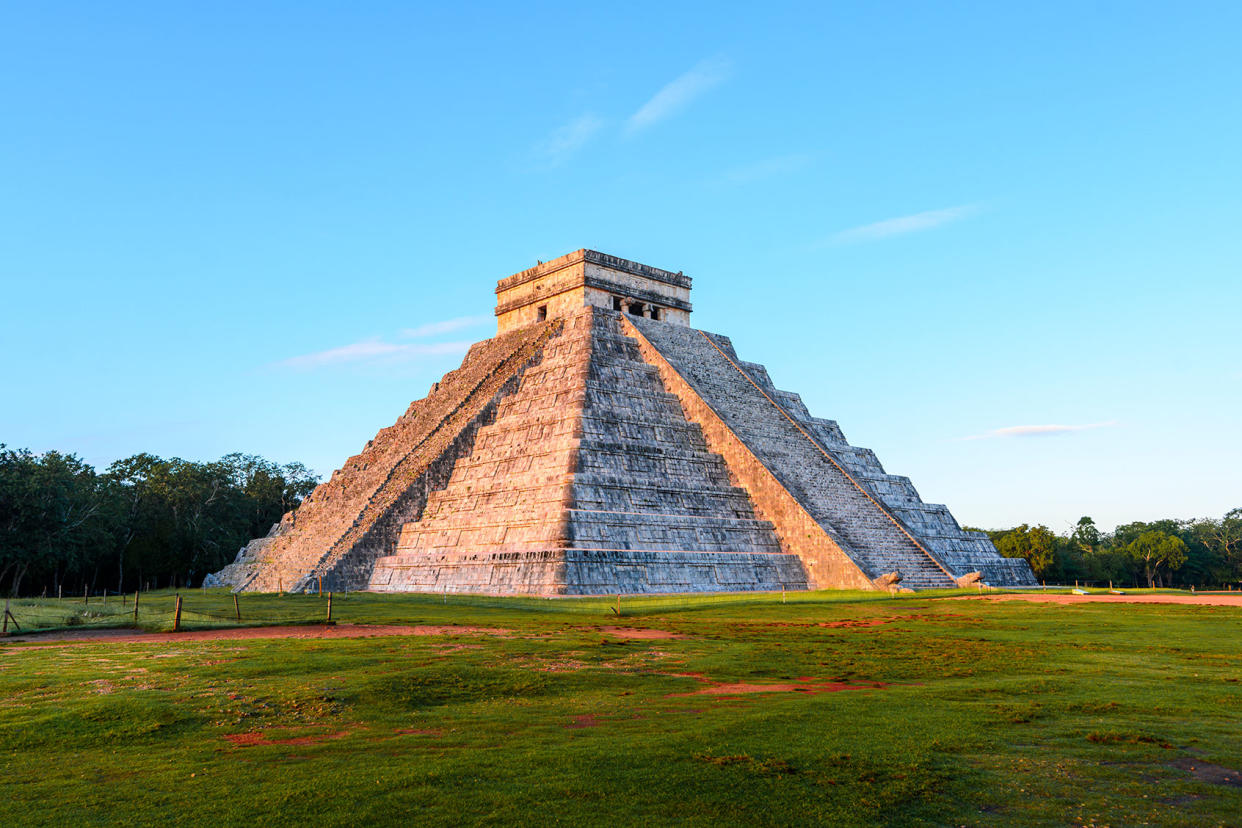Genetic analysis of ancient Mayan skeletons challenges virgin girl sacrifice trope

Ritual killing was a common part of religious sacrifice in the ancient Mayan city of Chichén Itzá. For decades, media depictions cast the victims of these acts as young women and adolescent girls. In an eye-opening discovery, however, an international team of researchers have upended that notion. Completing the world’s first analysis of ancient Mayan genomes, scientists said ritual sacrifices, at least in this context, largely focused on male children and their close relatives — including twin boys.
In a study published June 12 in the journal Nature, scientists analyzed genetic material obtained from the skeletal remains of 64 ancient Mayan children discovered at a religious site in the Central Mexican city of Chichén Itzá. Previous visual analysis of the skeletons posited that the remains of the juveniles were female. The new findings, however, confirmed that all 64 children were male. Additionally, at least a quarter of the children were closely related to another sacrificed child found in the pit.
“Most surprisingly, we identified two pairs of identical twins,” study co-author and archaeogeneticist Kathrin Nägele, of the Max Planck Institute for Evolutionary Anthropology said in a release. “We can say this with certainty because our sampling strategy ensured we would not duplicate individuals.”
Nägele and her team point to the “remarkably similar” dietary patterns of the victims which indicated that more than one child was often chosen from the same household, and which suggests male children were selected in pairs for sacrifice.
Researchers note that twins played a prominent role in ancient Mayan origin stories and spirituality, and that the sacrifice of twins is a theme in the group’s 2,000-year-old religious text. The colonial-era K’iche’ Mayan Book of Council, or Popol Vuh, includes a story of twin brothers Hun Hunahpu and Vucub Hunahpu who descend to the underworld. After the two are defeated in a ballgame, the gods sacrifice the two brothers. The one of the two brothers has twin sons who avenge their father and uncle. Known as the Hero Twins Hunahpu and Xbalanque, the younger set of twins outwit the gods by undergoing repeated cycles of sacrifice and rebirth.
Study co-author and physical anthropologist Oana Del Castillo-Chávez, of the National Institute of Anthropology and History Yucatán, said the findings confirm theories about the meaningful profile of selected sacrificial victims.
“The similar ages and diets of the male children, their close genetic relatedness, and the fact that they were interred in the same place for more than 200 years point to the chultún as a post-sacrificial burial site, with the sacrificed individuals having been selected for a specific reason,” Del Castillo-Chávez said.
Want more health and science stories in your inbox? Subscribe to Salon's weekly newsletter Lab Notes.
That specific meaning may also be tied to artistic representations throughout the Classic Maya period. Though the ritual structure was used for more than 500 years between the 7th to 12th centuries AD, researchers said the children were interred in the 200-year period of Chichén Itzá’s political apex between 800 to 1,000 AD. During that Classic period, the Hero Twins and their adventures are frequent subjects of stone carvings. Researchers also note that subterranean structures — like the one beneath the iconic El Castillo temple of Chichén Itzá where the children’s remains were discovered — were viewed as entrances to the underworld.
This led the scholars to theorize that the interment of twins and pairs of close-kin boys may be an expression of a ritual that involved recalling the story of the Hero Twins. Harvard anthropologist Christina Warinner, a group leader for the study, indicated that the first-time discovery of male predominance and twin selection among the skeletons offers pushback against popular fantasy tropes about virgin sacrifices — strengthening the importance of textual rites in their early culture.
“Early 20th century accounts falsely popularized lurid tales of young women and girls being sacrificed at the site,” Warinner said. “This study, conducted as a close international collaboration, turns that story on its head and reveals the deep connections between ritual sacrifice and the cycles of human death and rebirth described in sacred Maya texts.”
By comparing their findings about ancient inhabitants of Chichén Itzá to genetic composition of modern-day people in the region, the researchers were also able to confirm — for the first time — the direct genetic continuity of these two civilizations, past and present.
The finding was rooted in scientists’ ability to track the history of colonial-era epidemics through the genetic changes they caused through generations of area residents. The genetic variations include a heightened resistance to Salmonella infection, which caused massive population declines during the 1545 cocoliztli epidemic.
Lead study author Rodrigo Barquera, an immunogeneticist at the Max Planck Institute, and the other researchers worked closely with residents of the local Maya community of Tixcacaltuyub during the study to understand not only how colonial-era tropes may have impacted the portrayal of Mayan culture, but how colonial-era epidemics continue to impact indigenous populations.
“The present-day Maya carry the genetic scars of these colonial-era epidemics,” lead author Rodrigo Barquera, immunogeneticist and postdoctoral researcher at the MPI-EVA, said. “Multiple lines of evidence point to specific genetic changes in the immune genes of present-day Mexicans of Indigenous and mixed-ancestry descent that are linked to enhanced resistance to Salmonella enterica infection.”
As the study of ancient DNA increasingly allows researchers to unravel long-standing mysteries of the pre-colonial past — dispelling outdated notions of culture, and tracking understudied generational health impacts — the researchers said these scientific advances have a unique power. They’re allowing Indigenous researchers themselves to correct the narrative about their origins, while allowing them to steer the priorities of health science in the future.

